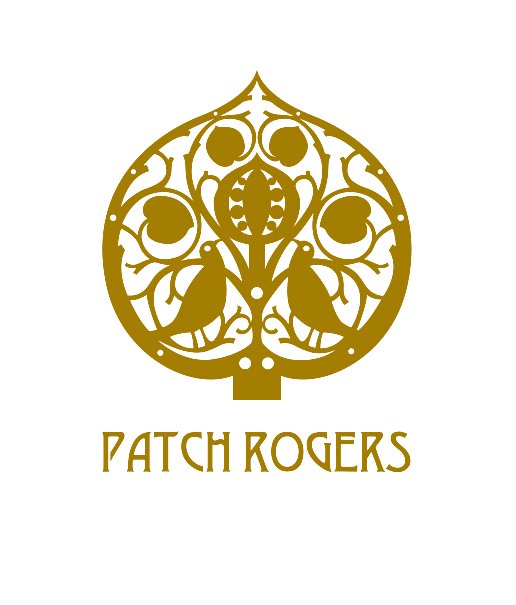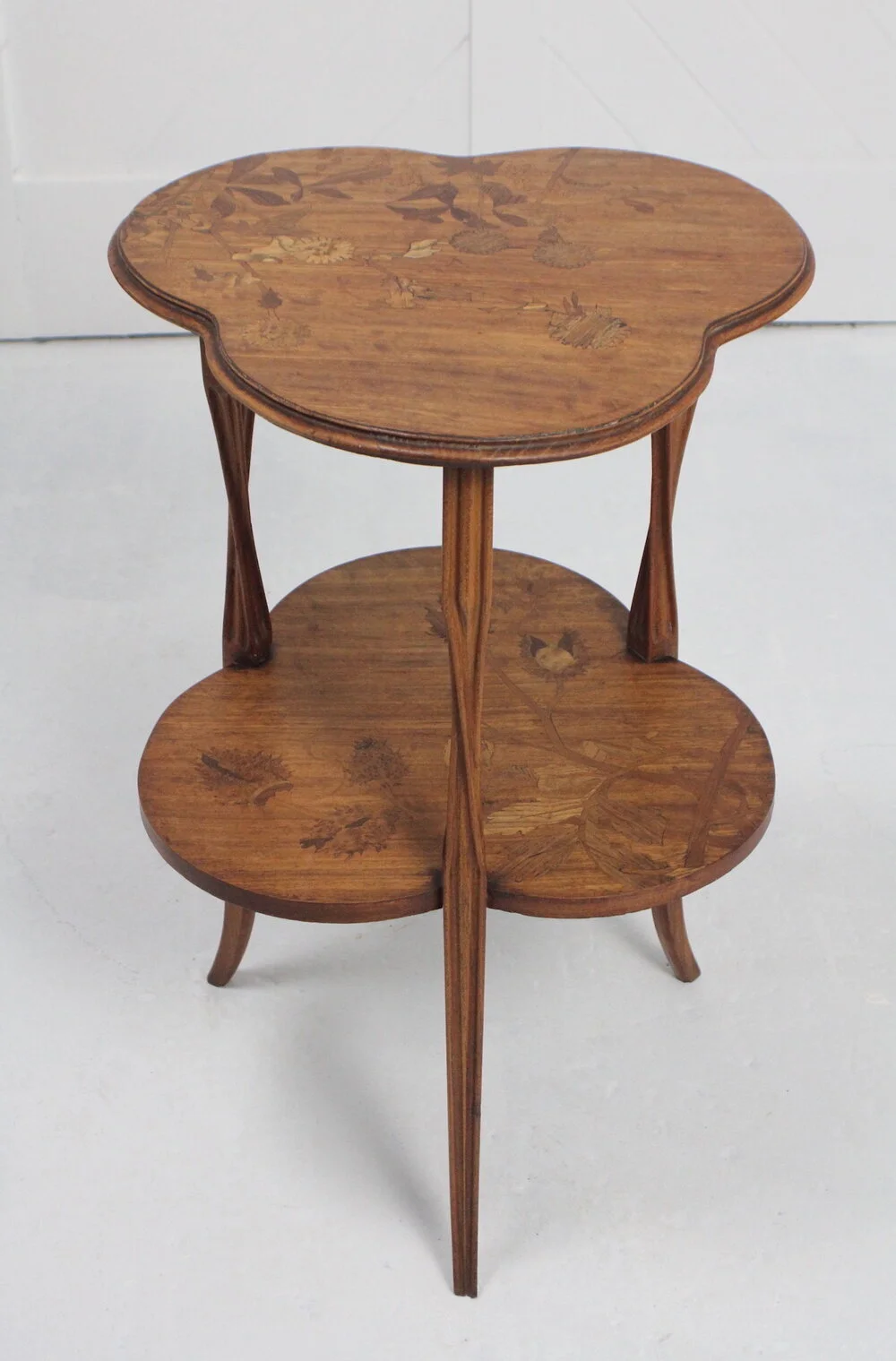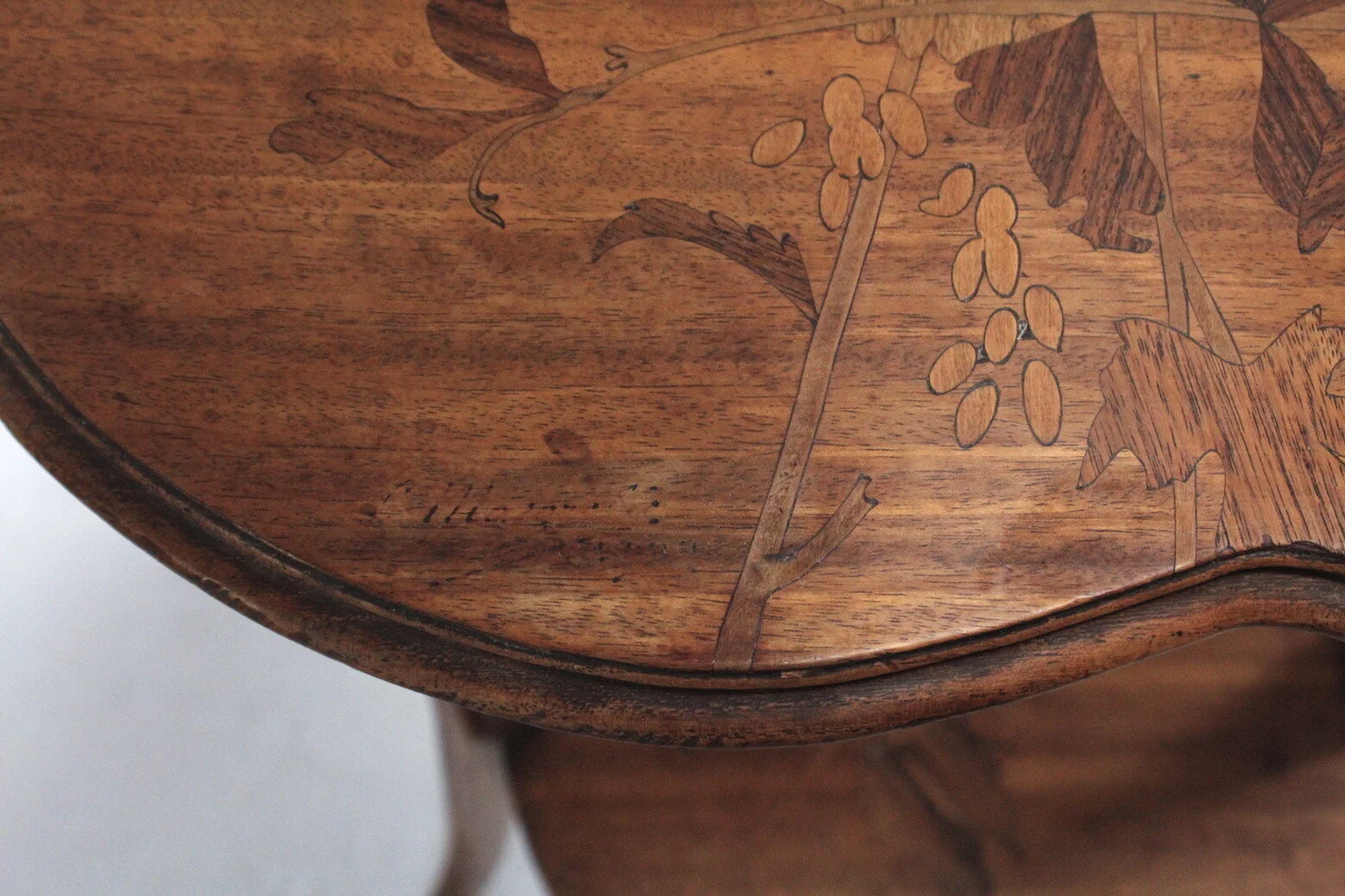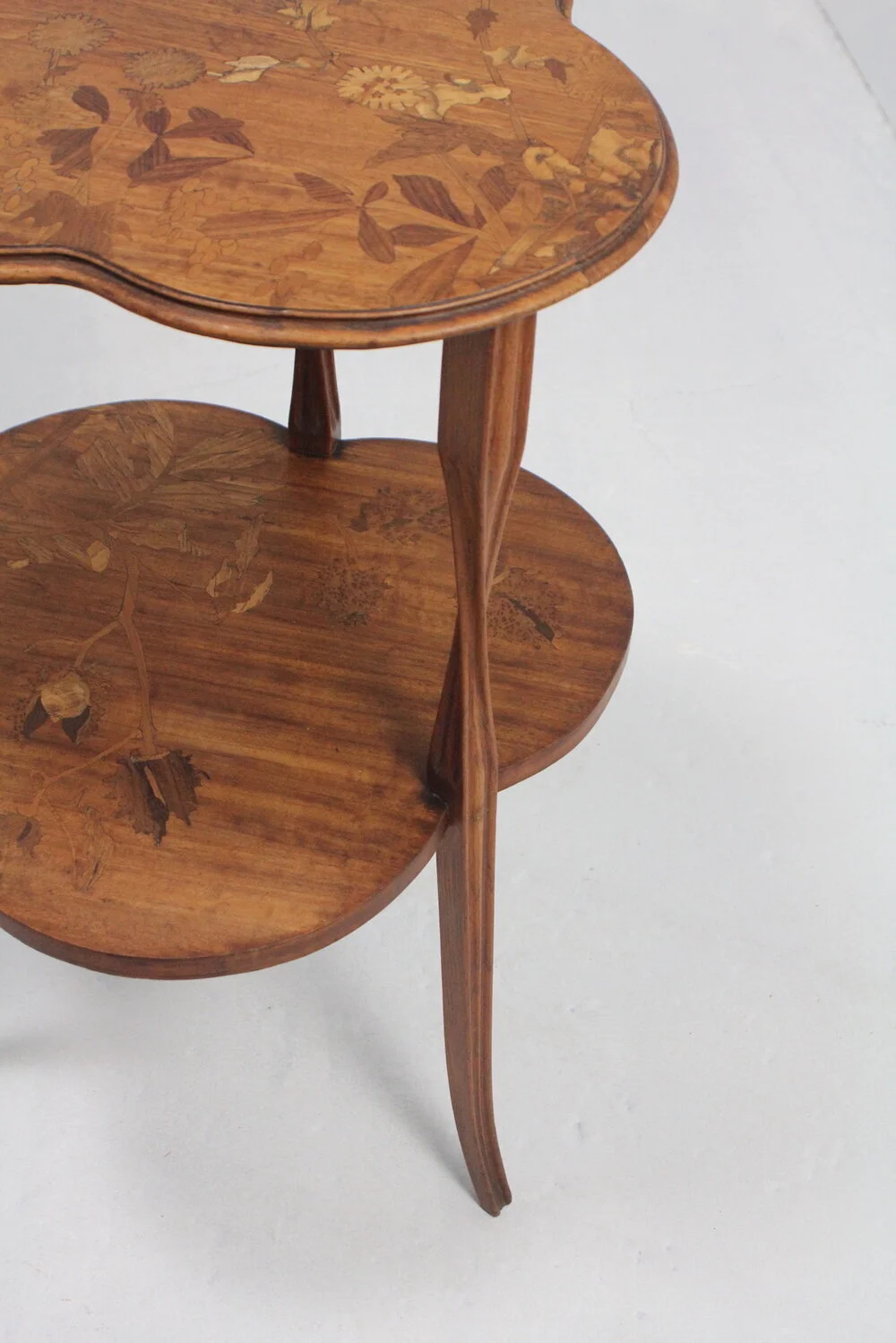LOUIS MAJORELLE SALON TABLE
LOUIS MAJORELLE SALON TABLE
Art Nouveau oak and walnut inlaid 2 tier salon table
Stylised Japanese inspired floral design
By Louis Majorelle c1900
Louis Majorelle 1859 -1926 is considered one of the finest cabinet makers in the Art Nouveau style. Born in Toul, France, the son of a cabinet maker, he trained as an artist at The Beaux Arts in Paris under Jean Francois Millet. Following his father’s death in 1879 he returned to the family business in Nancy, where more traditional copies of eighteenth century designs had been made, and with subtle adjustments to the angles and feet he gradually transformed these eighteenth century pieces into a ‘modern’ style suited to the emerging Belle Epoque.
Inspired by Emile Galle, the increasing Art Nouveau influence of sinuous curves, floral motifs and designs drawn from nature became the basis for his early work, getting ever more and more elaborate as the century drew to a close. Majorelle was simultaneously an artist and artesan with a superb design sense and great technical ability. Although setting a great store on hand craftsmanship, Majorelle began to use factory methods for manufacturing in order to keep the production costs down. In 1894 he created a complete new collection inspired by naturalism and symbolism with two main types of furniture: a luxury end market and a less expensive more commercial end market.
Majorelle began to design more metal work at his studio for adorning his furniture and at the 1900 Exhibition he drew much acclaim for his writing desk decorated with bronze water lilies. His detail to design was exemplary and the introduction of luxuriant gilded foliate mounts magnified further the flow and energy of his pieces. These decorative motifs used to embellish his designs were often in the form of favourite Art Nouveau flowers such as the water lily and the orchid. The use of marquetry in his furniture designs was also an important feature.
Majorelle was responsible for the ironwork of balconies, staircase railings, and exterior details on many buildings in Nancy at the turn of the twentieth century. Collaborating with Daum Freres, he designed metal mounts for their glassware and in turn Daum provided him with glass for his own collections. Together, the two firms produced a prodigious number of light fixtures in a joint venture spanning 3 decades with the majority of the important pieces being attributed to the designs of Majorelle. Naturalistic plant forms, slender stems, single flower heads and clusters of blossoms inspired the exquisite and elegant lamp bases and shades, which in turn became objets d’art in their own right.
Nancy became one of the centres of Art Nouveau of the Belle Epoque, Majorelle had an international clientele and by 1910 had opened shops in Paris, Lyon and Lille. The Ecole Nancy was established in 1901 and included several firms, artists and workshops emulating the Art Nouveau style. Emile Galle was the first head and Majorelle was his deputy. The establishment of a school for industrial arts as well as the participation in major exhibitions helped keep Nancy at the forefront of the Art Nouveau period.
In 1916 Majorelle’s factory suffered from a terrible fire which consumed his workshops, destroying valuable archive material, moulds and equipment whereby he fled to Paris until the War was over. His shop at Nancy was destroyed by a bomb in 1917 and the shop in Lille was looted by German troops. When the War was over the emergence of the new Art Deco style saw designs becoming less fluid and more streamlined and Majorelle moved with the trend, becoming more formal and austere in his design work. He re- established his factory and shop at Nancy and continued to collaborate with Daum glassworks but now influenced by the more geometric shapes and patterns. After his death in 1926 his business continued until its closure in 1956.





